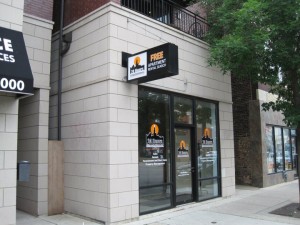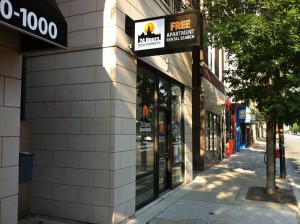Home sales in December dropped by 1% from November, the National Association of Realtors reported on Tuesday, but still stood nearly 13% above the levels of one year ago. That means home sales have risen from the year-ago month for 18 straight months.
For 2012 as a whole, sales were up 9% to 4.65 million units, the highest annual total since 2007.
 Prices, meanwhile, are picking up because the number of homes for sale continues to drop despite the sales volume gains. The number of homes for sale fell to 1.82 million at the end of 2012, an 8.5% drop from November and a 21.6% decline from one year earlier, the Realtors’ group said on Tuesday.
Prices, meanwhile, are picking up because the number of homes for sale continues to drop despite the sales volume gains. The number of homes for sale fell to 1.82 million at the end of 2012, an 8.5% drop from November and a 21.6% decline from one year earlier, the Realtors’ group said on Tuesday.
Here’s a breakdown of why inventory has continued to drop this year:
Many homeowners are underwater: More than 10 million homeowners owe more on their mortgage than their homes are worth, according to CoreLogic Inc. CLGX -1.83% That pencils out to around 22% of homeowners with a mortgage, or 15% of all homeowners (since not every homeowner has a mortgage). Underwater owners aren’t likely to sell unless they need to move due to changing life (marriage, divorce) or financial circumstances, and they’ll take a hit on their credit for pursuing a short sale, where the bank allows the home to sell for less than the amount owed.Data from CoreLogic show that inventory has been the most constrained in housing markets where there’s the largest concentration of underwater borrowers.
Others don’t have enough equity to “trade up”: Another 10 million homeowners have less than 20% equity in their current residence, meaning they can’t easily “trade up” to their next house. Traditionally, homeowners have relied on home equity to make the down payment on their next home, and to pay their real-estate agent to sell their current home and buy their next one. These “under-equitied” homeowners—meaning they don’t have enough equity to make a move to a more expensive home—have added to the drag on inventory.
Everyone wants to buy at the bottom, but few want to sell: Even those people who do have plenty of home equity are likely reluctant to sell if they think prices will be higher tomorrow. Would you sell your largest asset today if you thought it might be worth 5% more next year? This helps explain why markets such as Denver and Dallas, which didn’t have huge housing bubbles and thus had smaller shares of underwater borrowers, have also seen double-digit inventory declines.
More purchases from investors of all stripes: From the big institutional investors that have been grabbing all the headlines, to the mom-and-pop landlords that have traditionally played a much larger role renting out homes, investors have increasingly bought homes that can be rented out rather than flipped and resold for quick profits. This is further keeping inventory off the market in two ways: homes that are bought at courthouse foreclosure auctions never show up on multiple-listing services when they’re initially sold. They’re also held out of the for-sale pool because they’re being rented out.
Banks have been slower at foreclosing: Banks and other companies that process delinquent mortgages have had trouble proving that they’ve followed state law in taking title to homes ever since the “robo-signing” scandal surfaced in late 2010, and they’ve also had to meet a host of new state and federal rules governing loan modifications and foreclosures from settlements spawned by the robo-scandal. Banks have also become better about approving short sales and loan modifications, which has curbed the flow of foreclosed properties onto the market.
Builders have been putting up fewer homes: Housing starts were severely depressed from 2009 through 2011 and have only recently rebounded off of those low levels. Consequently, there’s been much less new home inventory being added to the market at a time when demand (boosted by increases in household formation) is picking up. If more homes are held off the market—for any of the five reasons above—you can bet that builders will move in to fill the void.
Many of these factors that have been dragging down inventory aren’t signs of “normal” or “healthy” housing markets—but then, we probably haven’t had a normal market for around a decade now. If anything, declining inventory shows that normal supply-and-demand dynamics are returning, which is an important step towards putting a floor under home prices and giving markets time to get back to health.
Source: “Six Reasons Housing Inventory Keeps Declining,” The Wall Street Journal (Jan. 22, 2013)




